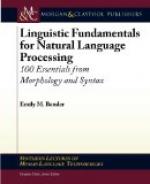The same idea may be called up in your minds by a picture of the apple presented to your sight. On this ground the picture writing of the ancients may be accounted for; and after that, the hieroglyphics of Egypt and other countries, which was but a step from picture writing towards the use of the alphabet. But these signs or vehicles for the conveyance or transmission of their thoughts, compared with the present perfect state of language, were as aukward and uncomly as the carriages employed for the conveyance of their bodies were compared with those now in use. They were like ox carts drawn by mules, compared with the most splendid barouches drawn by elegant dapple-greys.
A similar mode would be adopted now by those unacquainted with alphabetical writing. It was so with the merchant who could not write. He sold his neighbor a grindstone, on trust. Lest he should forget it—lest the idea of it should be obliterated from the mind—he, in the absence of his clerk, took his book and a pen and drew out a round picture to represent it. Some months after, he dunned his neighbor for his pay for a cheese. “I have bought no cheese of you,” was the reply. Yes, you have, for I have it charged. “You must be mistaken, for I never bought a cheese. We always make our own.” How then should I have one charged to you? “I cannot tell. I have never had any thing here on credit except a grindstone.” Ah! that’s it, that’s it, only I forgot to make a hole through it!”
Ideas may also be exchanged by actions. This is the first and strongest language of nature. It may be employed, when words have failed, in the most effectual manner. The angry man, choked with rage, unable to speak, tells the violent passions, burning in his bosom, in a language which can not be mistaken. The actions of a friend are a surer test of friendship than all the honied words he may




